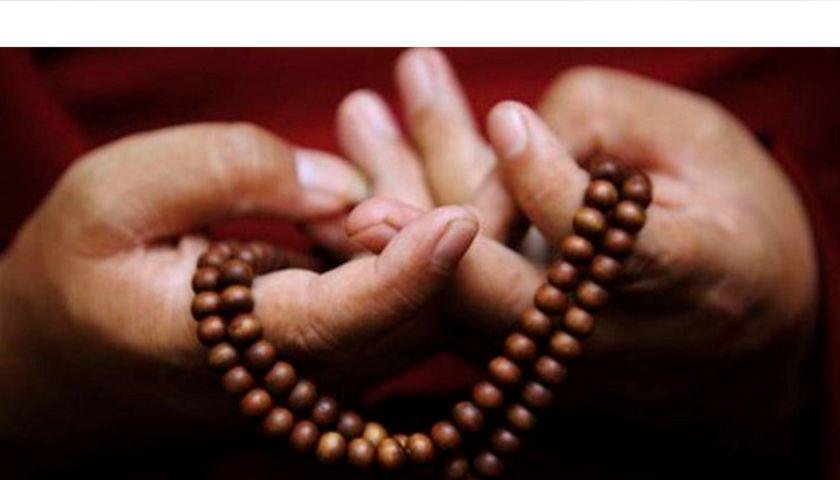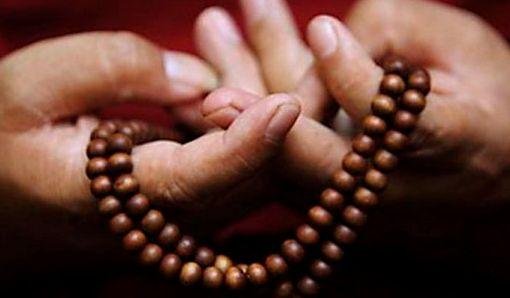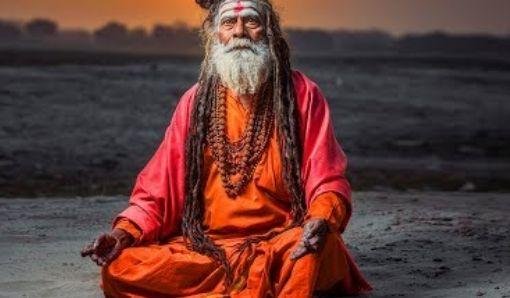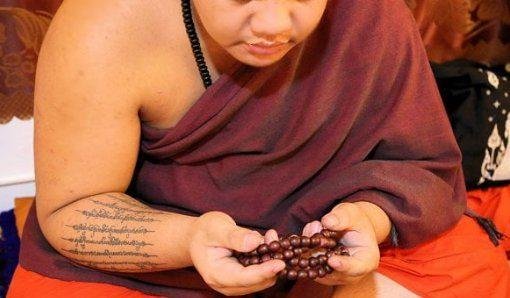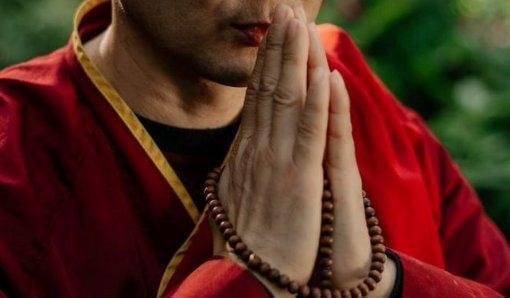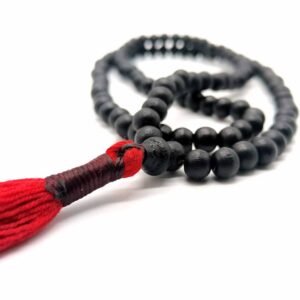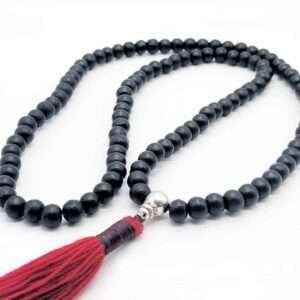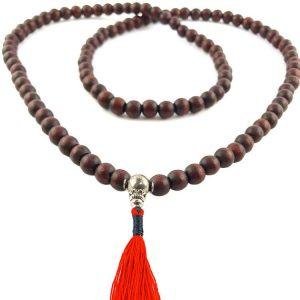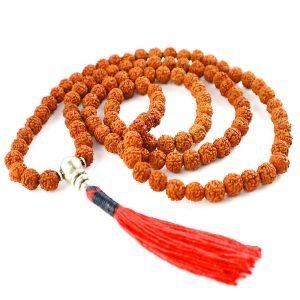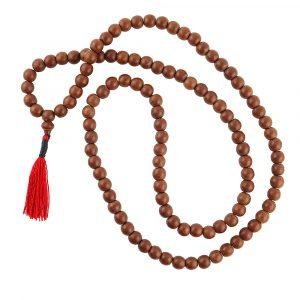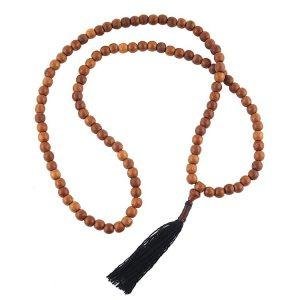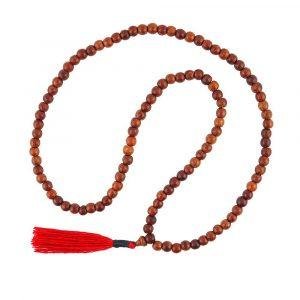What are Buddhist Prayer Beads? Exploring the Spiritual Tool of Buddha Beads
Buddhist prayer beads, also known as mala beads and Buddha Beads, are used by Buddhists and other religious followers to recite mantras, prayers, or other sacred texts. They are made of various materials, including wood, seeds, bone, and gemstones, and have different meanings and uses.
In this article, we will explore everything you need to know about Buddhist prayer beads, including their history, significance, types, and how to use them.
Quick Reference - Table of Contents
ToggleHistory of Buddhist Prayer Beads
There is no evidence of Mala Beads being used before Buddhism was introduced around the world. So it is safe to assume that while many religions now use Prayer beads in some form – Buddhist Prayer Beads were first used by Buddhist and then adopted by Hindus (What are Yoga Malas) Muslims and Christianity.
Popular legend on the origins of Buddhist mala practice says, King Vaidunya once said to the Buddha: “In recent years, disease and famine have swept my country. The people are distressed, and I worry about this night and day without interruption. Ours is a pitiful condition. The totality of the dharma is too profound and extensive for us to practice, given these circumstances. Please teach me just the main point of the dharma so that I may practice it and teach it to others.”
The Buddha replied: “King, if you want to eliminate earthly desires, make a circular string of 108 bodhi seeds and, holding them always to yourself, recite, ‘I take refuge in the Buddha. I take refuge in the dharma. I take refuge in the Sangha.’ Count one bead with each recitation of these three.”
Later in history the Catholic “rosary,” so named when travelers to India mistranslated the Sanskrit word japamala as “rose beads,” was adopted into Christianity. Its one hundred and fifty Hail Marys (completed by going through the beads three times) were a substitute for observing the monastic hours, in which all one hundred and fifty psalms were chanted.
Understanding the Components of a Buddha Bead Mala
A traditional Buddhist mala typically consists of 108 beads, each holding symbolic significance. The beads are often made from materials like natural wood of the region, rudraksha seeds, or gemstones, and they are strung together with a central guru bead and tassel.
The Spiritual Significance of Mantras
Mantras, sacred words or phrases, are an integral part of mala meditation. They hold vibrational energy and aid in focusing the mind, enhancing spiritual awareness, and transcending mundane thoughts.
The use of Buddhist Prayer Beads and Mala as a counting mechanism for the Mantra have made the Buddhist Mala Necklace an important art of religions that focus on meditation
How to Use Buddhist Prayer Beads
Buddhist Prayer Bead Mala are primarily used as a tool to aid Japa Meditation and are used for this purpose by Buddhist and Non Buddhist alike. The Mala is also a form of Buddhist Robe, used as a symbol or spiritual Intention to carry reminders and Blessings of those seeking a Spiritual Path.
a) Count the number of times a mantra or breaths are taken during meditation or
b) Used as magical jewelry to remind of spiritual intention or carry blessings
1) Buddhist Prayer Beads Uses and Meaning - Mala Used Mindfulness Meditation
The most common form of Meditation in both Hindu and Buddhist forms is the called Mantra Meditation or Japa Meditation. Mantras are a slogan or statement used to focus the wandering mind to a central theme or baseline position. Using a Meditation Mantra is called Japa Meditation and each Mantra is repeated hundreds or even thousands of times during a Japa meditation practice. Focusing on the Mantra, allows the person performing meditation to zero in on just one thought and aids in the purpose of stilling the Mind.
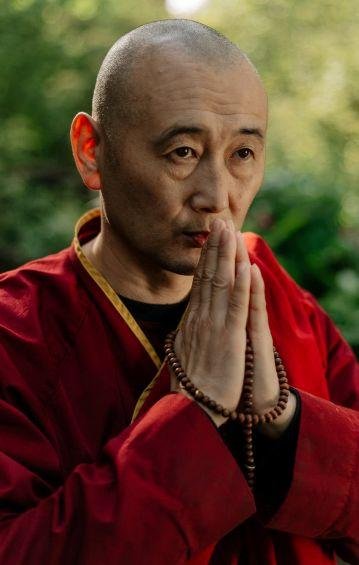 The purpose of meditation is to still the mind, and keeping track of how many mantras you recite during your Japa meditation requires concentration and active conscious thinking. The mala is used so that one can focus on the meaning or sound of the mantra rather than counting its repetitions. One repetition of the mantra is usually said for each bead while turning the thumb around each bead.
The purpose of meditation is to still the mind, and keeping track of how many mantras you recite during your Japa meditation requires concentration and active conscious thinking. The mala is used so that one can focus on the meaning or sound of the mantra rather than counting its repetitions. One repetition of the mantra is usually said for each bead while turning the thumb around each bead.
This process is repeated and when arriving at the head or guru bead, the person meditating turns the mala around and then goes back in the opposing direction. Typically one cycle of Mantras is about 100, (sometimes 108) but generally what ever philosophy of Japa you are using, by the time you reach 108 counts you start a new cycle.
If more than 108 repetitions are to be done, or the style of mediation requires suggested numbers of mantra repetitions then counting devices can be added to the Mala. What are Buddhist Prayer Beads
The 109th bead on a mala is called the sumeru, bindu, stupa, or guru bead. Counting should always begin with a bead next to the Guru. In the Hindu, Vedic tradition, if more than one mala of repetitions is to be done, one changes directions when reaching the Guru Bead rather than crossing it.
For more: …. Step by Step Instructions on Mala Counting for Meditation
2) Buddhist Prayer Beads Uses and Meaning - Mala Used for Personal Protection
A largely unknown use of Buddhist Prayer beads but one with long traditions is as a sacred and blessed object used as a charm of talisman. Especially popular with local peoples of many Asian cultures including Thailand, the Mala is blessed by a Monk and worn as not only a reminder to live a good life, but as a magical source of luck and protection.
 Modern Yoga practitioners have also started to use the Mala as a personal devotion jewelry item that is worn as jewelry. Often referred to and sold as ‘Inspired Jewelry’ incorporating gemstones and objects from a variety of philosophies that each individual Yoga practitioner decides is a right fit for them.
Modern Yoga practitioners have also started to use the Mala as a personal devotion jewelry item that is worn as jewelry. Often referred to and sold as ‘Inspired Jewelry’ incorporating gemstones and objects from a variety of philosophies that each individual Yoga practitioner decides is a right fit for them.
At Monk Mala, we provide authentic Buddhist Mala that have been blessed by Monks and made with simple, native and natural materials found in the local area. These Mala have been Blessed by one of many specialized Monks with a personal protection prayer to be worn as Buddhist Monk Jewelry.
It is the ideal of wearing your Buddhist Prayer beads as a protection amulet that created the use of ‘worry beads’. In times of stress, one can fiddle with the Worry Beads, creating a personal contact and connection to the Protection Blessing it contains
Can anyone use Buddha prayer beads, regardless of their religious beliefs?
Absolutely! Buddhist prayer beads are not exclusive to any particular religion and can be used by anyone seeking spiritual growth and mindfulness.
Buddhist prayer beads come in handy for meditation purposes. They provide a person with a way to keep track of breathing techniques and mantras as they go along the mala.
In addition to using the mala beads for meditation, they can also be worn as an accessory and a way to embrace their energy on a continual basis. Individuals who want to wear the Buddhist prayer beads can do so by wearing them as a necklace. Monk Mala Buddhist Prayer Beads have been Blessed by Monks so this initial energy will be within the Mala Bead Necklace. Over time your own energies will begin to infuse and reinforce this Monks Blessing.
However you choose to wear your Buddhist prayer beads, you should try to not let them touch the ground as this may ground the energies contained within them. So keep this in mind when taking them off and storing them.
Meaning of 108 Beads of Buddhist Prayer Beads Mala
Why do Buddhist Prayer Beads have 108 Beads?
The truth is, if there is a single reason why Buddhist Prayer Beads have 108 beads it has been lost to time, with only speculation left as to the meaning of why there are 108 Beads in a Mala Prayer Necklace. The most common explanations for the meaning of 108 beads is
1) Signifying the 108 mortal desires of mankind
2) Allows for 100 Mantas plus 8 mistakes in counting.
3) 27 Constellations x 4 Padas (parts) = 108
4) 12 Zodiac Houses x 9 Planets = 108
5) Upanishads or the Scriptures of the Vedas = 108
Thus, when we recite or recount number 108, we are actually remembering the entire universe. This reminds us of the fact that the universal self is omnipresent, that is the innate nature of the self. This is it’s simple form is the Buddhist Prayer Beads Meaning.
As Buddhism spread and was influenced by various cultures, each Buddhist sect would develop their own traditions associated with the Mala. Some forms of Buddhism and Yoga practitioners also use the Buddhist Prayer Beads as a protective charm and talisman.
However you choose to wear your Buddhist prayer beads, you should try to not let them touch the ground as this may ground the energies contained within them. So keep this in mind when taking them off and storing them.s
What is the meaning of the Buddhist Mala Guru Bead?
The primarily use of the Prayer Mala Guru Bead is as a measure of counting the cycles of Mantra. It allows the user to know without any conscious effort when a cycle has been completed. The guru bead represents the relationship between the student and the guru or spiritual method being used.
Once you have completed a full circuit of the mala and reached the guru bead again, you reverse direction by flipping your mala. Then you continue again in reverse order. Most people believe that you do not cross over the guru bead as a sign of respect towards one’s spiritual teachers.
Choosing the Right Prayer Bead Mala for You
Incorporating Buddhist prayer beads into your spiritual practice can be a transformative experience. As you explore the world of malas, you open the door to deeper self-awareness, inner peace, and a profound connection to the universe. So why wait? Begin your journey with these sacred beads today!
Today there are many people selling many different types of Buddhist prayer beads. The mala beads come in various styles, colors, and materials. When you choose your Buddhist prayer beads, you should keep the following considerations in mind:
- Real and Authentic Buddhist Mala Beads: Buddhist prayer beads are made by many different people ranging from the Authentic Buddhist Mala Beads found at Monk Mala to fashioned jewellery made by people who work in Yoga studios. Here you need to consider the intention behind wanting a Buddhist Prayer bead … do you want the pure and traditional item or something that was created with intentions influenced by a individual new age philosophy?
- Type of material: Real Buddhist prayer beads are made of just a few different materials. Usually holy woods and seeds, and on rare occasions Gem Stones. The variety of different gemstones sold in today’s market often come from regions not natural to Buddhist countries.
- Color: The color of the mala may be chosen simply for aesthetic purposes while other times you might want to choose a certain color based on what it represent
- Tassel or pendant: Many Buddhist prayer beads have tassels or pendants on them. Real Buddhist Prayer beads tend to just have beads or a tassel on them. Decorations tend to be a western influence.
- Guru bead: The guru bead is also unique in its color and design, so you can choose a mala with a guru bead that best speaks to you
Monk Blessed Buddhist Prayer Beads Video
Blessings Included
Safe Travel
Inner Peace
Good Luck &
Personal Protection
Resource to What are Buddhist Prayer Beads? wikipedia

